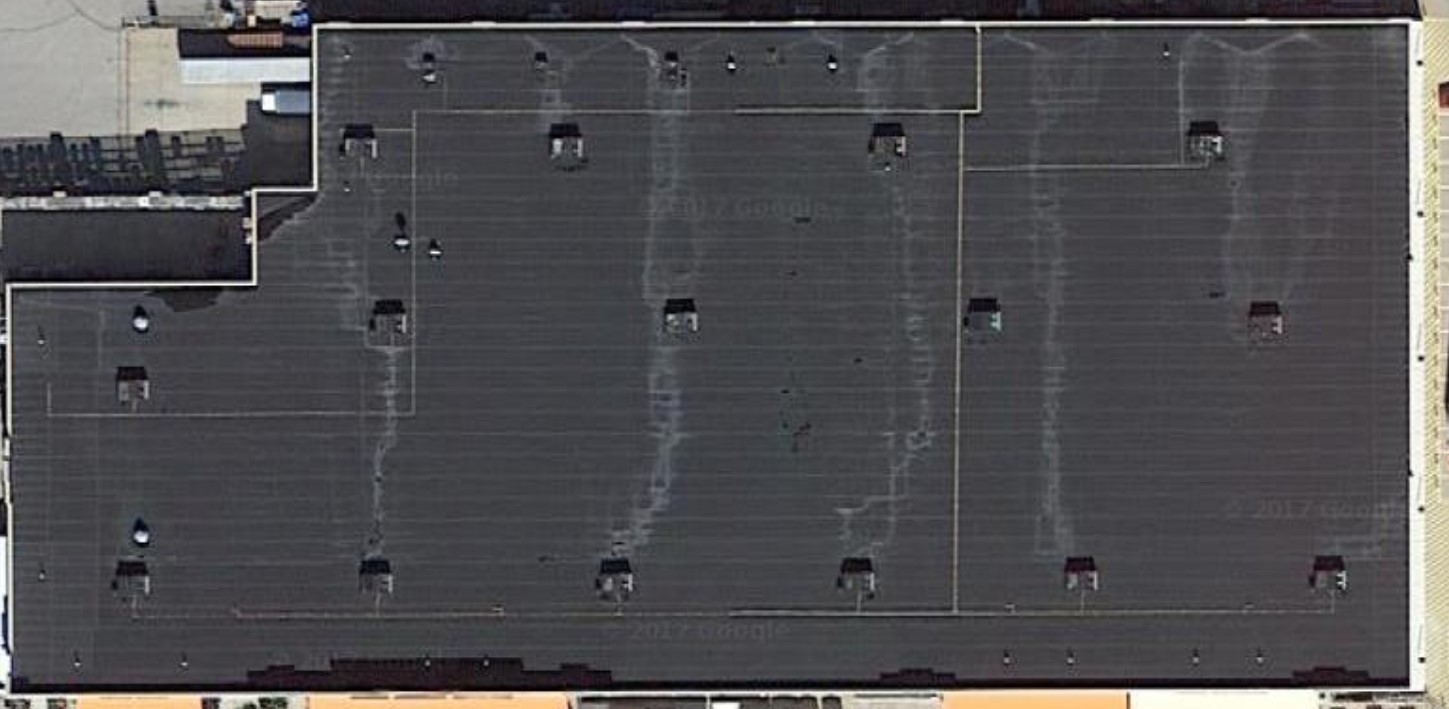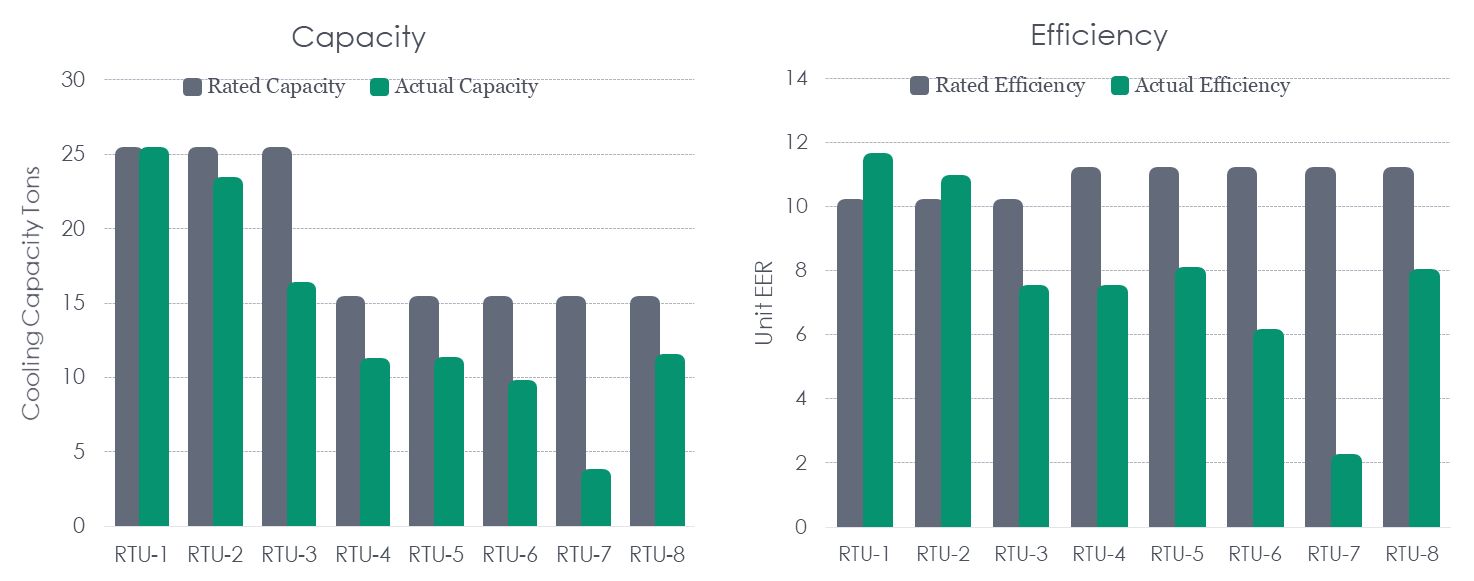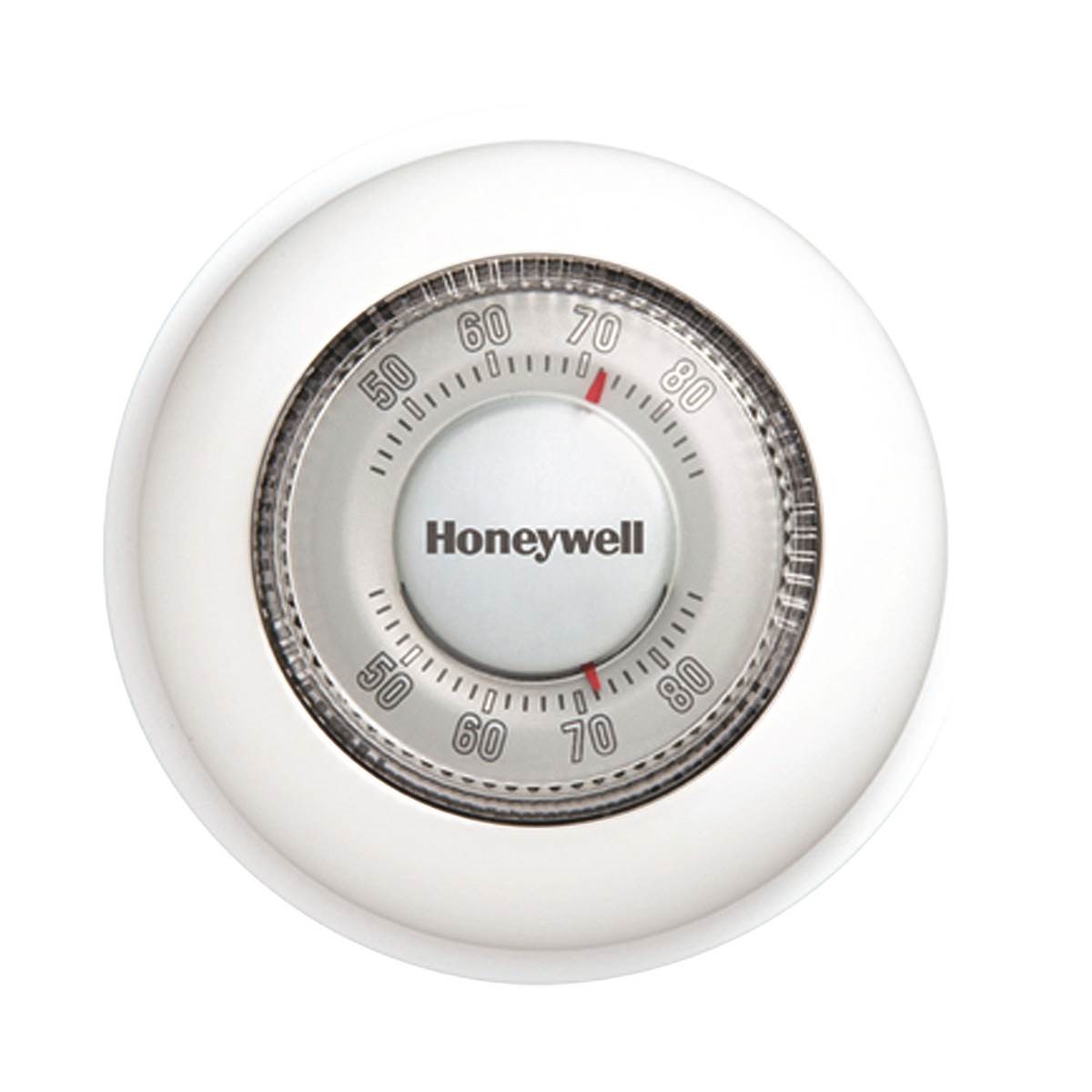
Last week several of us at Michaels bemoaned the hazards of operations and maintenance (O&M), controls, and behavioral programs. The specific discussion was about the ubiquitous rooftop unit, like those shown on the box-store roof below. The discussion could have been about anything other than light bulbs.
Measures in a portfolio come with a spectrum of savings risk from baselines, to hours of use, to risks associated with operation once deployed. Next week I think I’ll analyze an entire portfolio of risks and give those risks relative scores. For instance, many measures depend on the baseline – not necessarily the phony arbitrary counterfactual, “what would have happened” but what is.

So yes, a great deal of efficiency measure success is based on the application or installation of the measure, and the operation once installed. Pardon me if I go back to the 80-year-old house I bought last summer, but it provides many great examples of active participation after deployment. Set it and forget it? No!
World Class Technology, Controlled by a 1980s Interface
For all the greatness of the mini-split heat pump technology – its brains, how it handles zonal temperature control, variable speed everything, and silent operation – its control interface is, uh, quite horrible. It would be better served by this here Honeywell dumb thermostat from Blain’s Farm & Fleet for $24.99. Sleek, elegant, simple, beautiful. Nobody is going to get a rebate for replacing a clunky, unusable, programmable thermostat with one of these. However, for many users, it would reduce energy consumption over the perpetually overridden horror of the digital programmable thermostat.
For cooling with the heat pump, I’ve settled on a combination of schedule, which is a pain in the kiester to adjust, hold (temperature), and just turning it off completely.
Thermostats for the Masses, Not Me
Speaking of thermostats, I recently compared the Nest thermostat to Apple products. It’s great if your brain comes without the baggage of wanting to customize and organize things. If you want to let the thing organize your life the way it wants, Apple is the brand for you.
For instance, a user can operate the Nest like the Honeywell shown, and Nest will figure out the occupancy pattern after a few days and program itself. That’s great, except Jeff doesn’t come and go with the regularity of a toddler’s sleep routine. There are “home” and “away” settings and at least a couple ways for Nest to schedule those settings. How about letting me control those settings? For instance, I would set it to away at 55F and later that evening find, while I’m away, that it’s heating to 68 degrees. Damn! What happened? You don’t know what I want, Nest. Let me do it!
The theme is, I installed a fancy schmancy heating and cooling system, and later, controls. To get the full, or even half the energy and non-energy benefits (comfort when I want it) from these upgrades requires substantial learning and babysitting. This is the challenge with a lot of commercial and industrial measures.
Rooftop Units and Lifeguard Babysitters
In my day, before helicopter parents and sunscreen, and when kids were actually physically active, kids would get dropped off at the swimming pool all afternoon for a childcare solution. Not bad! Rooftop units are yesteryear’s kids. Throw them up there on that roof, and I don’t want to hear from you again! The result can be anything:
- Temperature setpoints for dueling units – one is trying to heat while its neighbor is trying to cool. Seen it; been there.
- One of two condenser fans isn’t running, resulting in an astronomical head pressure condition for the compressor and no cooling capacity from that half of the unit.
- Cooling coils converted to filters – i.e., the real filter is gone, and now the coil is the filter – not good. Cooling capacity and efficiency tank.

Test results for one building’s rooftop units (RTUs) are shown in the charts below.

Due to the things mentioned, the capacities and efficiencies are far below rated. The units can be fixed in a one-two punch of efficiency. First, get them cleaned up, charged up (with refrigerant), and get the motors running. Second, they can be outfitted with advanced rooftop controllers to capture variable speed fans, demand controlled ventilation, accurate economizer (free cooling) savings, and status surveillance.
If I were buying a box store with RTUs, even a new one, you can take it to the bank that I would have all these tested and then monitored with an advanced control interface. I would be engulfed in OCD until those things were fixed.
Did I mention a compressor running without an accompanying condenser fan is likely to end up in the scrap heap real soon? I guarantee you, when the compressor goes, a new one would be installed, and it would burn out on high head pressure too – because human robots do not think critically. Fix the symptom and move on. Bad choice.






Join the discussion One Comment